Xiaomi Mi 11 Ultra Revealed: Price And Specs For New Android Powerhouse
Xiaomi has revealed its newest flagship phone, and as expected the Xiaomi Mi 11 Ultra is enough to give Samsung some nightmares. Packing a huge 50-megapixel camera sensor, a periscope zoom, wildly-fast 67W wireless and wired charging, and a tiny rear touchscreen for notifications and selfies, it's basically everything we've seen Xiaomi working on over the past year or so, rolled into one phone.
On the front, there's a 6.81-inch WQHD+ (3200 x 1440) AMOLED display, in 20:9 aspect with quad-curve design. It'll hit up to 1,700 nits of peak brightness, Xiaomi says, and has both a 120Hz refresh rate and a 480Hz touch sampling rate.
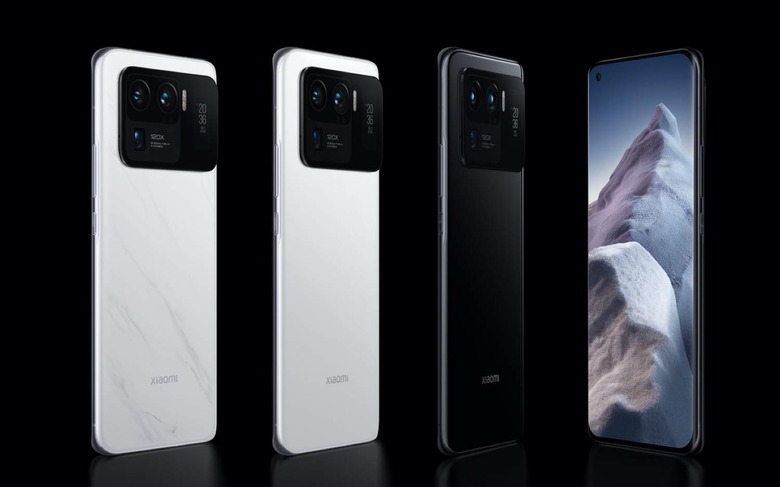
It's DCI-P3 and HDR10+ compliant, with a Dolby Vision 360-degree ambient light sensor 2.0, and covered in Gorilla Glass Victus. However it's the Mi 11 Ultra's second display that's arguably more fascinating, even though at 1.1-inches it's only a fraction of the size. Positioned alongside the camera sensors, the 126 x 294 AMOLED panel is a tiny touchscreen which can be used in always-on mode for notifications and more, as well as to frame selfies when you're using the primary cameras.
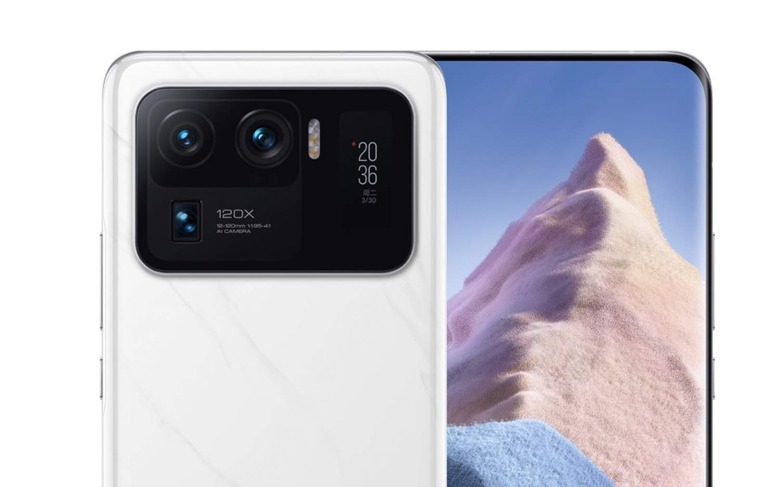
That's important because, while there's a 20-megapixel in-display selfie camera on the front, you probably really want to use the sensors Xiaomi has packed on the rear. Pride of place is a Samsung GN2 50-megapixel wide-angle, co-developed by the company with Xiaomi, with f/1.95 optics and – at 1/1.12-inches – the largest phone camera sensor currently on the market.
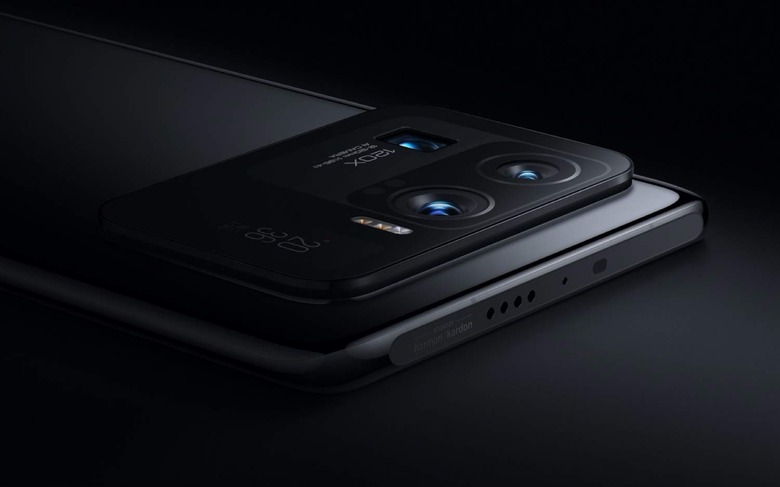
It uses 4-in-1 Super Pixels, and a Time-of-Flight multi-point laser focus system. Xiaomi says that – with its in-house night mode algorithms – it can deliver images with just 0.02 lux of light. Alongside it is a 48-megapixel 5x optical periscope zoom; that's capable of 10x hybrid zoom, or 120x digital zoom. The 48-megapixel ultra-wide uses the same Sony IMX586 sensor as the optical zoom; however, it has a 128-degree field of view with AI-powered lens distortion correction.
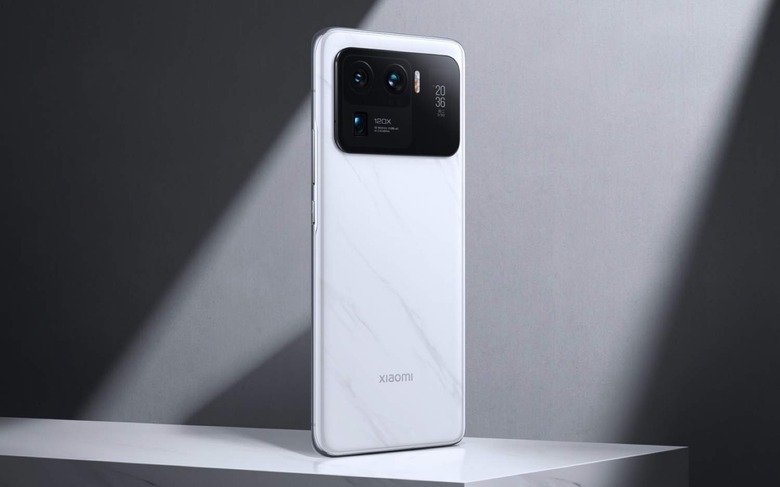
All three cameras can shoot 8k 24fps video. The 50-megapixel primary camera can do Staggered-HDR, too. Powering it all is the Qualcomm Snapdragon 888, with 12GB of memory and 256GB of storage as standard. Xiaomi has used its three-phase cooling system for the first time, here, too, promising twice the thermal conductivity performance from a new processor cooler. It runs Android 11 with Xiaomi's own MIUI 12 interface.
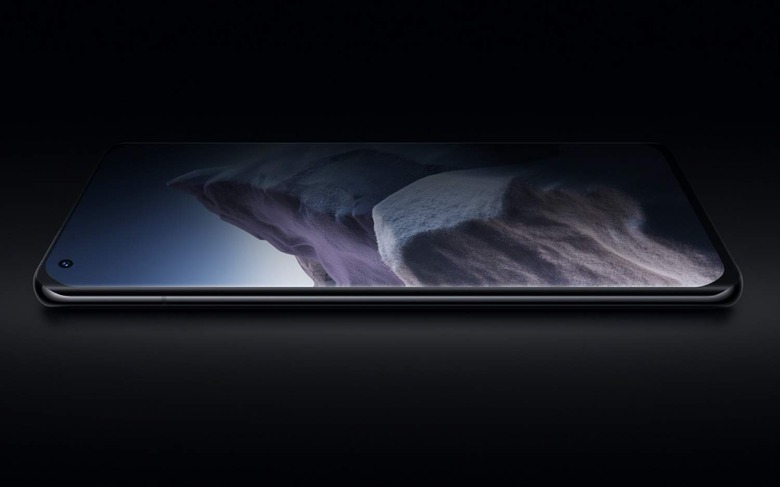
The Mi 11 Ultra uses a ceramic back – in white or black – and is IP68 water and dust resistant. There's a 5,000 mAh battery, with support for 67W wired and wireless charging: a full recharge using the bundled charger, Xiaomi says, will take just 36 minutes. 10W reverse charging is supported, too.
Xiaomi also loads the flagship up with dual-SIM/dual-5G standby support, USB Type-C, Bluetooth 5.2, WiFi 6/6E, an IR blaster, and an in-display fingerprint sensor. There are also dual speakers with Harman Kardon tuning, with the custom drivers promising what Xiaomi claims is the loudest sound in the industry.
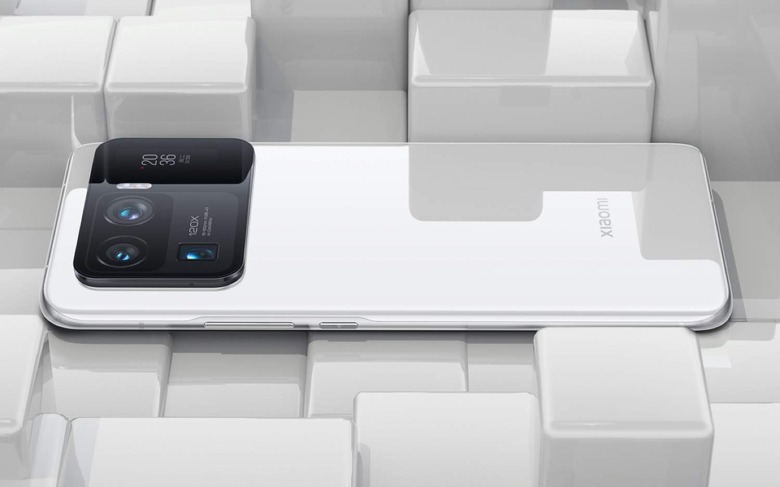
All in all, the biggest limitation here may well be availability. Xiaomi says that the Mi 11 Ultra will go on sale at 1,199 euro ($1,395) in Europe, though there's no specific sales information for the US.
